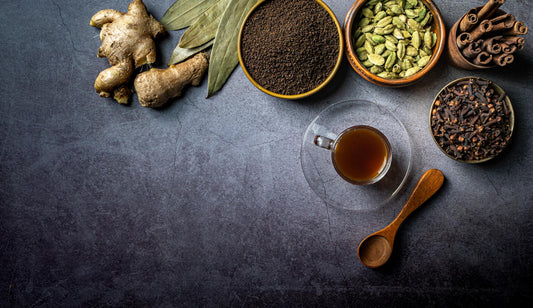Assam Teas - Evolution of Green Teas
Assam, a lush and fertile region nestled in the northeastern part of India, is renowned for producing some of the world's finest teas. While Assam Tea is predominantly popular for its bold and robust black teas, the history and emergence of Assam Green Tea are equally fascinating. This journey through time explores the origins, development, and significance of Assam Green Tea.
Ancient Beginnings
Tea drinking has a long history in India, dating back thousands of years. However, it was primarily confined to herbal teas made from indigenous plants. The discovery of the tea plant, Camellia sinensis, in Assam, was a turning point in the Indian tea narrative. Indigenous tribes in Assam, particularly the Singpho tribe, had been using the wild tea plants growing in the region for centuries, long before the British discovered their potential for commercial cultivation.
Colonial Influence and Discovery
The history of Assam Green Tea, like most of Assam's tea, is deeply intertwined with British colonialism. In the early 19th century, the British East India Company was eager to break China's monopoly on tea production. In 1823, Scottish adventurer Robert Bruce discovered the Assamese tea plant in the upper Brahmaputra Valley. This plant, Camellia sinensis var. assamica, was distinctly different from the Chinese variety, with larger leaves and a more robust flavor.
Bruce’s discovery led to the establishment of the first commercial tea plantations in Assam. The British initially focused on producing black tea, which catered to the tastes of the European market. However, as the tea industry grew, there was a gradual exploration into producing green tea as well.
Early Commercial Production
The production of Assam Green Tea began as an experiment to diversify the region's tea offerings and cater to a growing global interest in green tea's health benefits. The initial techniques for processing green tea were adapted from Chinese methods, with a focus on preventing oxidation to maintain the leaves' green color and fresh flavor.
Despite these efforts, green tea production in Assam remained relatively small compared to black tea. The strong, malty flavor of Assam tea was more suited to the black tea market, and green tea was not a primary focus. However, the knowledge and techniques for producing green tea were preserved and gradually refined over time.

Post-Independence Growth
After India's independence in 1947, the tea industry underwent significant changes. The management of tea estates transitioned from British to Indian hands, leading to renewed interest in diversifying tea production. Green tea production saw a resurgence as both domestic and international markets began to recognize its health benefits.
During the late 20th century, health-conscious consumers worldwide started to appreciate green tea for its rich antioxidants and numerous health benefits including weight-loss, digestion, etc. This shift in consumer preference spurred Assam's tea estates to invest more in green tea production, blending traditional techniques with modern innovations.
Modern Era and Global Recognition
Today, Assam Green Tea enjoys global recognition for its unique qualities. Modern techniques have enhanced the cultivation and processing methods, ensuring a high-quality product that retains the distinctive characteristics of the Assam variety. The bright, vibrant liquor, fresh vegetal taste, and underlying malty notes make Assam Green Tea a favorite among tea enthusiasts.
The global demand for organic and sustainably produced teas has also influenced the Assam Green Tea industry. Many tea estates in Assam now follow eco-friendly practices, focusing on sustainability and fair trade, which further enhances the appeal of Assam Green Tea in the international market.
Cultural and Economic Impact
Tea, including green tea, is more than just a beverage in Assam; it is a vital part of the region's culture and economy. The tea industry provides employment to millions of people in Assam and is integral to the socio-economic fabric of the region. Festivals, local traditions, and daily life in Assam are closely tied to tea cultivation and consumption.
The cultural significance of tea in Assam is celebrated through various festivals and events, where the unique heritage and history of Assam tea, including green tea, are showcased. The annual Assam Tea Festival is one such event that attracts tourists and tea lovers from around the world, offering a glimpse into the rich history and vibrant culture of Assam's tea industry.
Conclusion
The history of Assam Green Tea is a captivating tale of discovery, adaptation, and innovation. From its ancient roots in the practices of indigenous tribes to its modern-day status as a globally recognized health beverage, Assam Green Tea has come a long way. Its unique flavor, coupled with a rich cultural heritage, makes it a remarkable part of the world tea landscape. As you sip a cup of Assam Green Tea, you are not just enjoying a refreshing drink but also partaking in a rich legacy that spans centuries.



